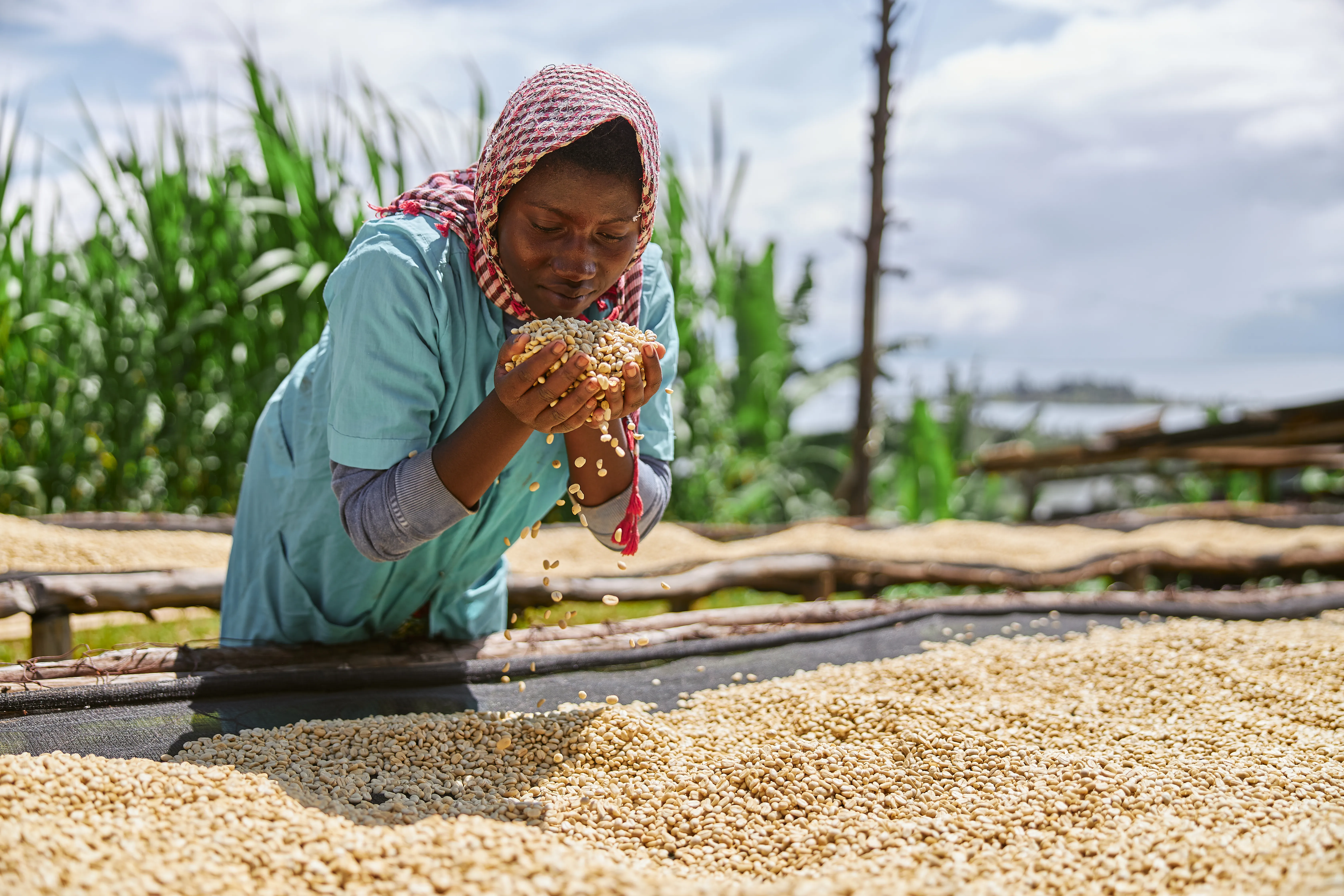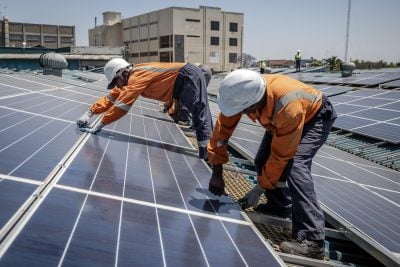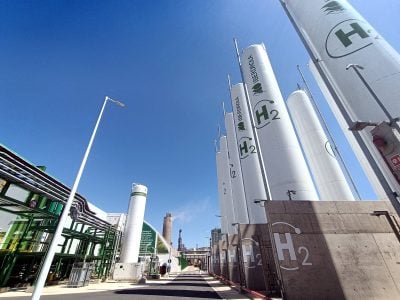Agriculture has long served as the backbone of the Rwandan economy and today employs 70% of Rwandans and accounts for 31% of GDP and 90% of domestic consumption.
With regional food insecurity mounting and the African Continental Free Trade Area (AfCFTA) promising to greatly increase intra-African trade, Rwanda is targeting a role as a food exporter.
After Rwanda’s rural economy was reduced to ashes by the ethnic violence of 1994, farming was targeted as a priority area to drive economic recovery. Studies were conducted on the country’s varied geography to reveal a range of different soil types and microclimates.
The Crop Intensification Programme of 2007 trained farmers in best practices, provided access to high-quality seeds, and increased the use of fertilisers from 5% to 70%. Subsidies were provided, ranging from 15% and 35% for mineral fertilisers and 50% and 80% for improved seeds.
Much work remains to be done, however. Between 2010 and 2015 rates of chronic malnutrition among children under the age of five decreased from 44% to 35% but are still among the highest in the world.
The World Food Programme estimates that 20% of Rwandans are food insecure. Despite recent improvements, fertiliser use remains below the regional average.
Advantages of geography
The Great Lakes Region holds 27% of the world’s fresh water, and Rwanda’s equatorial location and altitude mean a steady climate throughout the year, punctuated by two rainy seasons (around October and April).
This allows year-round cultivation with one harvest per rainy season. The use of artificial irrigation even ensures a third harvest of many crops.
Rwanda’s high altitudes (the country’s lowest point is 950m above sea level) and hilly landscape are perfectly suited to the cultivation of tea and coffee. But the country’s geography does have its disadvantages as well, in the form of unusual crop and livestock diseases endemic to the region, and a range of demanding soil varieties.
Africa is also the most vulnerable continent to climate change despite being the lowest emitter of greenhouse gases. Food insecurity is a looming worry across Africa as weather patterns change, crops fail, and cities continue to grow at some of the fastest rates in the world.
These issues, however, are being overcome through rigorous research into which crops and inputs are best suited to different parts of the country. High-value crops such as avocados, passion fruits, French beans, chilis, and mushrooms are currently receiving the most attention.
In response to the Covid-19 pandemic, Rwanda maintained agricultural subsidises and food deliveries to disadvantaged groups, moves that kept the sector moving. National carrier RwandAir’s fleet was repurposed for delivery of high-value food exports, of which the airline transports 120 tons per week to North Africa, the Gulf, and Europe.
- Rwanda sets ambitious goals in finance and tech
- We expect double digit growth for 2021,’ says Rwanda finance minister
- Rwanda aims to forge vaccine production hub in BioNTech deal
Structural changes
Agriculture is a priority growth area. The country’s overarching Vision 2050 has at its core a plan to reform Rwandan agriculture by moving towards more commercial farming practices.
“That means moving away from subsistence farming and providing the structural changes that will make that possible,” says Gérardine Mukeshimana, Rwandan minister of agriculture.
“More and more people are going to be moving to non-agricultural sectors in line with the government’s development plans, which will mean a move away from subsistence farming and an increase in the size of plots.”
One of the government’s priorities is the formation of cooperatives to phase out small, unproductive subsistence-level farms (which account for 75% of agricultural production) and move towards a market-oriented agricultural sector. This is done by offering farmers access to subsidies, oversight, inputs and technology, all of which offer economies of scale.
The Rwanda Cooperative Agency is charged with promoting cooperative farms to increase productivity and increase farmers’ access to financial solutions, advice, and competent management.
Its current priority is the promotion of Savings and Credit Cooperative Societies (SACCOs), which allow farming communities to cover risks and provide collateral against receiving credit.
Vision 2050 will seek to include all farmers in this system to encourage a virtuous circle of investment and scale economies.
“Cooperatives give banks even more appetite to work in agriculture”, says Diane Karusisi, CEO of Bank of Kigali, “as the transaction costs are lower and our own interests are better protected from risk.”
Small-scale farmers, too, are being helped by the Smart Nkunganire System (SNS), a partnership between Bank of Kigali and the Bill & Melinda Gates Foundation.
The SNS is a vast database of individual farms that drives data-based decision making on exactly what sort of interventions and inputs are needed at individual farm level. This includes the provision of financial products, such as pay-at-harvest loans for tea and coffee producers.
As Rwanda’s economy develops and an entire generation of would-be subsistence farmers are equipped with a technical education, the country is set to see a rapid expansion of its technological capabilities across all sectors, including in traditional industries like agriculture.
Today the sector is dominated by primary production and export of raw materials but aims to move towards value-adding agro processing in the coming decades. Further upstream, agritech is increasing productivity, reducing inputs, and freeing up human resources for the rest of the economy.
Looming over these encouraging developments is one of the world’s biggest developments in international trade.
It is difficult to exaggerate the importance of the AfCFTA, which is set to unite 1.3bn Africans in a single market worth around $3.3 trillion. The biggest regional free trade area in the world aims to remove tariffs from 90% of goods traded within the continent.
Harmonising regulations and lowering trade barriers will expand continental infrastructure to ease logistics and distribution, which is particularly important to agriculture.
“This will help attract investment, boost output, add value, reduce food waste, extend shelf-life, and most importantly increase productivity,” says Mukeshimana. “Seizing this opportunity is the answer to the food insecurity trap that many African countries are facing, while addressing a range of related issues such as unemployment.”
Attracting investors
To boost exports, Rwanda plans to attract private investors to provide cold trucks, cold rooms, warehouses, research, irrigation, and inputs.
“We are trying to boost partnerships to encourage both import substitution and exports. There is no silver bullet, which is why the government’s public spending is spread across all these areas,” says Mukeshimana.
Incentives offered include duty-free import of inputs, tax exemption for agricultural equipment, seven-year tax holidays for new export ventures, and a 50% reduction in corporate income tax for prolific producers and exporters.
Farming contracts guarantee farmers a reliable income and integrate small-scale farmers into the global trade system, while the provision of credit to install irrigation systems is allowing year-round production.
If Rwanda can develop its potential in infrastructure, tech, and finance while making the most of the opportunities of the AfCFTA, farming will continue to enjoy a central role in the Rwandan economy.
Want to continue reading? Subscribe today.
You've read all your free articles for this month! Subscribe now to enjoy full access to our content.
Digital Monthly
£8.00 / month
Receive full unlimited access to our articles, opinions, podcasts and more.
Digital Yearly
£70.00 / year
Our best value offer - save £26 and gain access to all of our digital content for an entire year!
 Sign in with Google
Sign in with Google 



